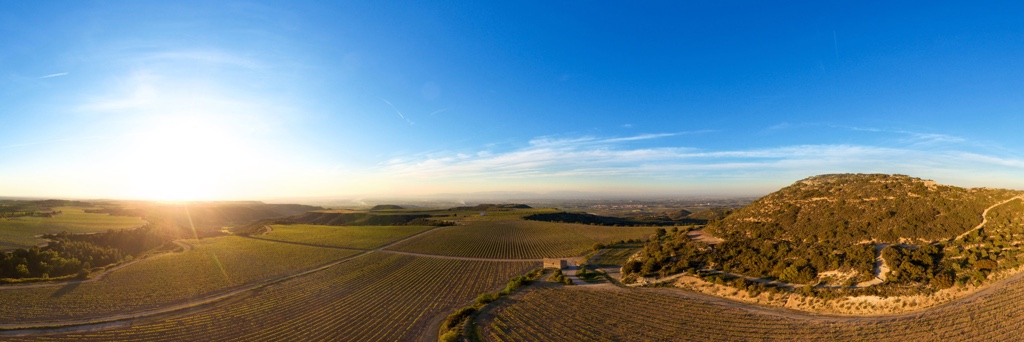The most emblematic part of the space is Els Bessons hill, formed by two points aligned north-south and of the same altitude (594 m), surpassed by the rest of the hills of the massif: Marquesos (655.9 m), which forms the roof of the space, the summit of Pouet (654.5 m) and Xiveta hill (632.8 m).
Note the large amount of natural vegetation on the slopes of the hills and mountain ranges, mostly scrub and bushes, as well as fragments of holm oak forest and Aleppo pine forests. The preservation of these continuous mantles of natural vegetation gives it a uniqueness and highlights the contrast with the flatter areas, mainly cultivated with dryland crops: vines, olives, almond trees and barley.
Throughout the entire space dry stone buildings in their different forms (dry stone walls, cabins, tile cabins, tanks and cisterns, etc.) can be seen, which, during the nineteenth century and until the middle of the twentieth century helped farmers to turn the land into arable land and make their lives easier.
FLORA AND VEGETATION
Biogeographically, the Bessons mountain range is located in a confluence zone of the continental subregion with the southern Mediterranean subregion. For this reason, the vegetation species present are holm oak, kermes oak and gutwort, among others.
There are also species of more restricted distribution typical of the southern Mediterranean subregion, with a more restricted distribution, such as Spanish broom or Ononis tridentata.
In addition, there are also species from the Eurosiberian region, in particular sub-Mediterranean. It corresponds to the vegetation typical of dry oak groves, to which species such as Valencian oak and bladder-senna belong.
As mentioned in previous sections, calcicolous scrubs occupy a good part of the territory and are dominated by rosemary scrub and slim-leaved flax with sage-leaved cistus. Along with the scrub, the garrigue dominated by kermes oak characterizes the plant covering of this natural area. The small fragments of meadows present in the areas of poorer soils are classified as habitats of community interest, since they contain a rich and varied flora of annual herbaceous species (ramose false brome, lampwick plant, ruta, etc.).
WILDLIFE
The mammals are made up of insectivores: the North African hedgehog, the European hedgehog, the greater white-toothed shrew; rodents: the garden dormouse, wood mouse, the brown rat, the Algerian mouse, the Mediterranean pine vole and the red squirrel.
The types of Mustelidae that are resident in the area include: the weasel, the beech marten and the ferret. The fox and wild boar are abundant, and the presence of roe deer has lately been detected. Currently, the rabbit has become quite abundant again.
Finally, the presence of the common bat has been noticed, as well as a colony of lesser horseshoe bats, which is a protected species classified as almost under threat.
In terms of reptiles, the ocellated lizard is very common.
BIRDS (ORNITHOLOGY)
This agroforestry vegetation landscape, which is very open, with low and bush vegetation interspersed with dryland crops, favours the abundance of partridges and, above all, rabbits, both preys of diurnal predatory birds such as the buzzard and nocturnal birds of prey such as the Eurasian eagle-owl, the barn owl, the little owl, the tawny owl and the long-eared owl.
Moreover, it is a scattering area for young Bonelli's eagle and golden eagle individuals (species under threat), from the Catalan pre-coastal and coastal mountain ranges as well as from other areas of the Mediterranean and Iberian peninsula, and southern France, where it nests in scarps and cliffs.
Although this is not strictly a steppe area, various steppe birds do nest here, such as the stone-curlew, the European roller, the stock dove, the greater spotted cuckoo, the black-eared wheatear, the red-legged partridge and less commonly the black wheatear.

